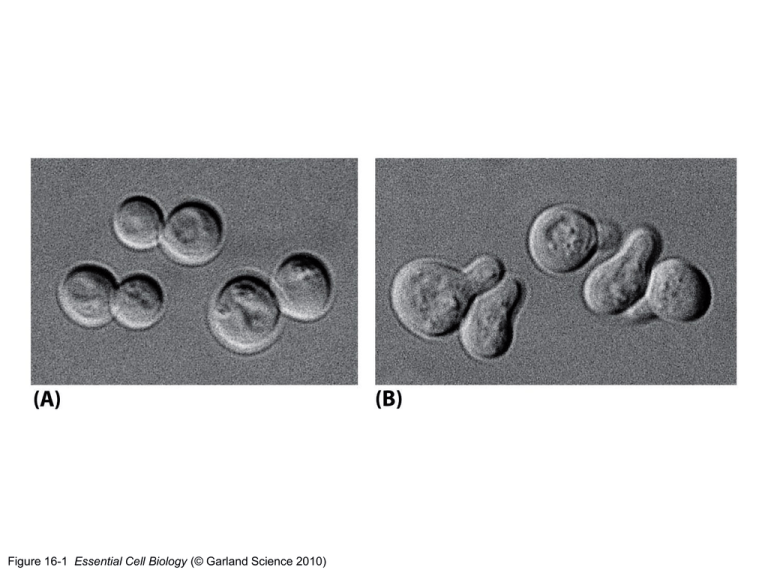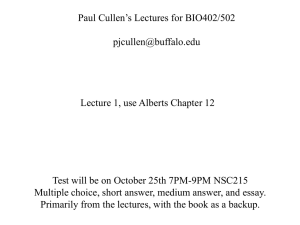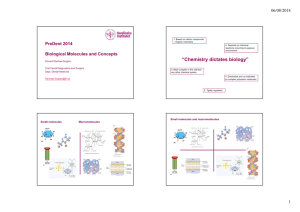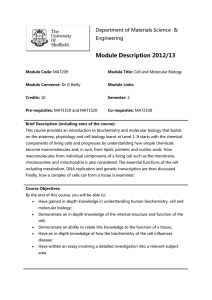Essential Cell Biology
advertisement

Figure 16-1 Essential Cell Biology (© Garland Science 2010) Figure 16-2 Essential Cell Biology (© Garland Science 2010) Figure 16-5 Essential Cell Biology (© Garland Science 2010) Figure 16-8 Essential Cell Biology (© Garland Science 2010) Figure 16-11a Essential Cell Biology (© Garland Science 2010) Figure 16-11b Essential Cell Biology (© Garland Science 2010) Figure 16-11c Essential Cell Biology (© Garland Science 2010) Figure 16-3 Essential Cell Biology (© Garland Science 2010) Table 16-1 (part 1 of 2) Essential Cell Biology (© Garland Science 2010) Table 16-1 (part 2 of 2) Essential Cell Biology (© Garland Science 2010) Figure 16-6 Essential Cell Biology (© Garland Science 2010) Figure 16-7 Essential Cell Biology (© Garland Science 2010) Figure 16-10 Essential Cell Biology (© Garland Science 2010) Figure 16-15a Essential Cell Biology (© Garland Science 2010) Figure 16-15b Essential Cell Biology (© Garland Science 2010) Figure 16-15c Essential Cell Biology (© Garland Science 2010) Figure 16-14 Essential Cell Biology (© Garland Science 2010) Figure 16-13 Essential Cell Biology (© Garland Science 2010) Figure 16-16 Essential Cell Biology (© Garland Science 2010) Figure 16-17 Essential Cell Biology (© Garland Science 2010) Figure 16-18 Essential Cell Biology (© Garland Science 2010) Figure 16-19 Essential Cell Biology (© Garland Science 2010) Figure 16-20 Essential Cell Biology (© Garland Science 2010) Figure 16-21 Essential Cell Biology (© Garland Science 2010) Figure 16-22 Essential Cell Biology (© Garland Science 2010) Figure 16-23 Essential Cell Biology (© Garland Science 2010) Figure 16-24 Essential Cell Biology (© Garland Science 2010) Figure 16-28 Essential Cell Biology (© Garland Science 2010) Figure 16-26 Essential Cell Biology (© Garland Science 2010) Figure 16-27 Essential Cell Biology (© Garland Science 2010) Figure 16-25 Essential Cell Biology (© Garland Science 2010) Figure 16-30 Essential Cell Biology (© Garland Science 2010) Figure 16-31 Essential Cell Biology (© Garland Science 2010) Figure 16-32 Essential Cell Biology (© Garland Science 2010) Figure 16-42 Essential Cell Biology (© Garland Science 2010) Figure 16-43 Essential Cell Biology (© Garland Science 2010) Alfred G. Gilman, Martin Rodbell (1994) "for the discovery of G-proteins and the role of these proteins in signal transduction in cells" Martin Rodbell showed in 1971 that the transduction of a message from the exterior of the cell to its interior requires the cooperation of three functional units: 1) a discriminator (receptor) that recognizes different extracellular signals (first messengers), 2) a transducer that requires GTP, and 3) an amplifier that generates large quantities of a second messenger. Alfred Gilman and his coworkers used leukemia cells to identify and demonstrate G-proteins. Normal leukemia cells respond with a normal biological response to the appropriate first messenger. In mutated cells, however, no response was evoked, because the cells lacked the G-protein. The function could be restored by G-protein derived from another tissue such as brain. Robert J. Lefkowitz, Brian K. Kobilka (2012) "for studies of G-protein-coupled receptors" Cartoon of a cell with its interior (light blue) and exterior (blue), with their different chemical compositions separated by a phospholipid bilayer. The bilayer contains many proteins. Shown are two copies of a GPCR with specificity for a diffusible ligand (yellow). The fraction of receptors with bound ligand is governed by the ligand concentration. The receptor to the left is unoccupied and non-activated, and the receptor to the right is occupied by a ligand, bound to a G-protein (red), and activated. The ligand does not pass through the membrane; the signal is transmitted by conformational changes in the receptor protein. The prediction of seven helices in βAR is shown above rhodopsin. The homologous amino acid sequences in helices five, six and seven are aligned, and identities and similarities are coloured.





